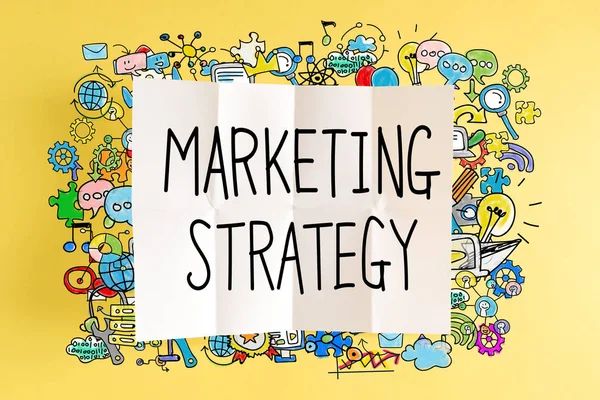
Who needs a marketing strategy:
- major market players;
- actively developing companies;
- companies in whose niche a strong competitor has appeared;
- companies with a wide range of specializations.
Why do you need a marketing strategy for an organization?

Some companies prefer to respond quickly to what is happening in real time. For example, they hurriedly create a new product line or distribute fabulous discounts, feeling the “staggering” of the market. But reactive changes work for a short time, mostly until the next incident. In order not to sit on a powder keg all the time, the company needs to annually develop a marketing strategy and make changes to the old one. While a standard marketing strategy lives (like love) for three years, consumers won’t wait that long. Customers change their preferences depending on trends, economic and market conditions.
Marketing strategy goals:

- Customer satisfaction.
- Unique selling proposition and differentiation.
- Efficiency of distribution of marketing messages.
- Ensuring the availability of goods at points of sale.
- Providing support to consumers at every stage – from acquaintance to purchase.
Types of Marketing Strategies

There are many marketing strategies, and as a result of the cooperation of marketers and entrepreneurs, new subtypes are born all the time. Each of them provides a different level of approach to the amount of investment. The eminent marketer Philip Kotler proposed four basic strategies that form the basis of any strategic management. Based on the strategies of marketing titans, we offer:
1. Think one step ahead
The purpose of this strategy is to grow the company’s market segment. To achieve results with this system, we need to involve a large amount of investment. The money invested may lead to a short-term decrease in income, but in the future it will ensure stable growth of the company. For example, when purchasing new equipment, you may incur temporary losses caused by the changeover to a new system and, as a rule, the price of equipment. Such a system covers all costs over time, paying off by optimizing the workflow.
2. Hold at all costs
This marketing strategy involves maintaining customer loyalty for as long as possible. In this case, we pay a lot of attention to following popular trends and creating various interactive experiences for consumers. Still remember the brilliant PR move of Coca-Cola with the names on the bottles? Product personalization is the way to the buyer’s heart.
3. Harvest
Market marketing strategies are designed to quickly increase the company’s income without the prospect of its further increase. For those who want to make a profit here and now – an ideal option. It implies an increase in cash flow in the short term without long-term prospects. Such a system is suitable for a startup that is focused on rapid growth and exit of the creators from the project.
4. Say goodbye if necessary
The strategy of disqualification (or deinvestment) is to change the direction of the business or its complete liquidation. We apply it when existing resources do not bring the expected profit and can be used more efficiently in other areas. For example, Nokia was a tire manufacturer in the past, but then the founders decided to gather all their strength to create cell phones.
How to create a marketing strategy. Marketing strategy plan

To create a marketing analysis, we need to conduct market research. It consists in the study of the macroeconomic environment – everything that directly or indirectly affects the development of the enterprise. In the course of the analysis, we determine the boundaries of the market and its development trends.
Market research takes into account such factors:
- economic – purchasing power depends on the economic situation. It will be difficult to sell a product if there are no buyers;
- political – the involvement of politics in business affects the situation of the market as a whole. Therefore, it is worth considering the political situation in the country and being able to adapt to it;
- technical – new technologies that simplify the creation of products and their promotion can greatly simplify, for example, production. But they will require an additional budget;
- social – consumer expectations often take on a shade of mental, psychological and sociological characteristics of certain groups of the population. It is necessary to study the characteristics of the target audience that the brand is counting on;
- international – the situation in the world, new trends and possible problems affect both small and medium-sized businesses and large entrepreneurs.